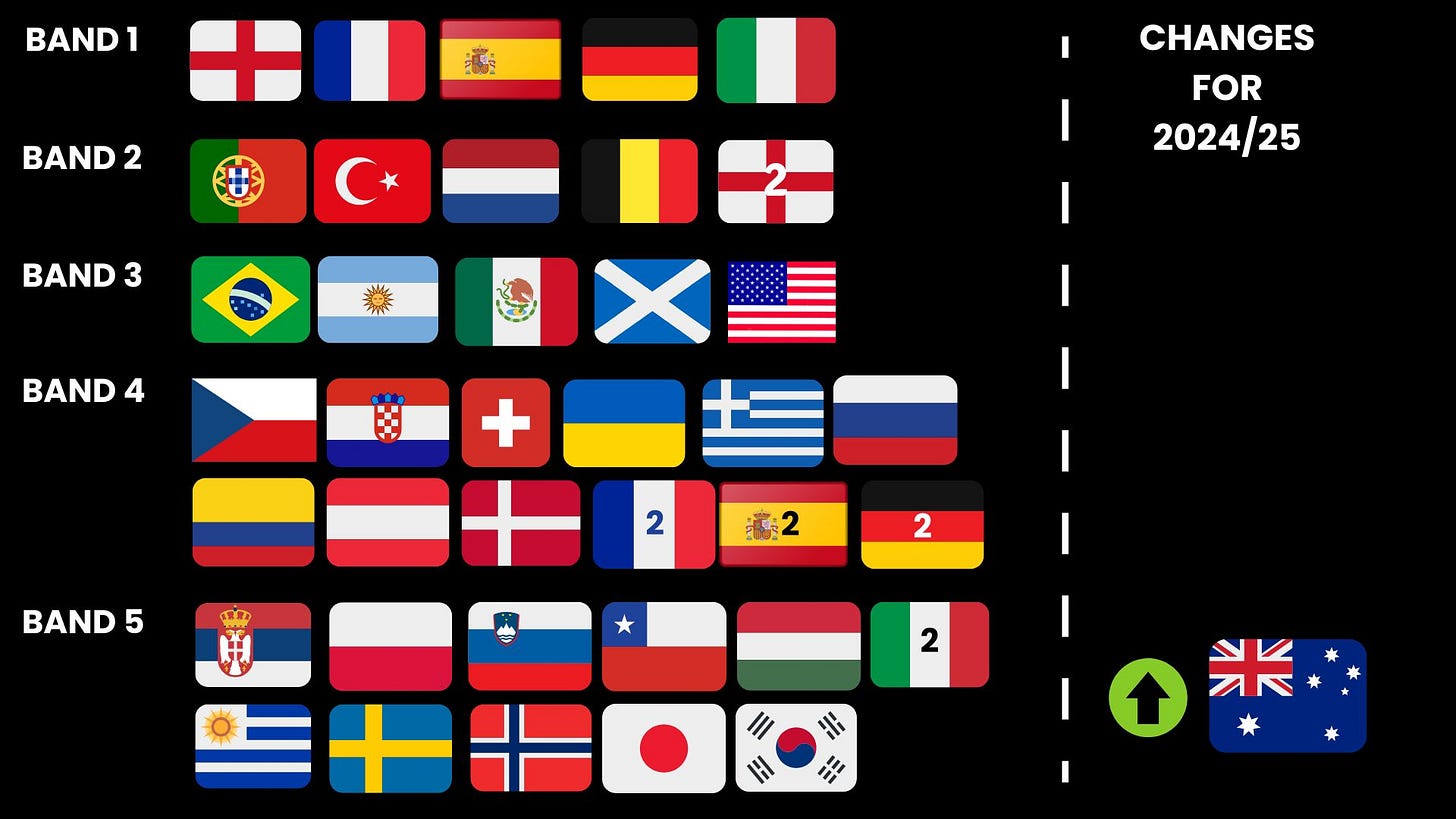The most important learning from recruiting in Bands 1-3, including GBE Expert Player Report on Yassin Oukili
Day 9 of the 12 Days of GBE Expert Hub Content
The reminder of the GBE bands is up here for a very good reason. It is time to delve into the banded leagues to establish some interesting trends and golden rules about recruiting from particular bands of leagues.
The first golden goal of recruitment from anywhere is that talent can be found anywhere and everywhere. In my opinion, it is quite a foolish m…
Keep reading with a 7-day free trial
Subscribe to GBE Expert Hub to keep reading this post and get 7 days of free access to the full post archives.




